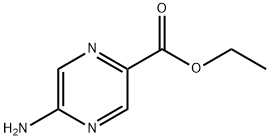Hello, I'd like to ask about the uses of caustic soda. Could you explain why it's used and provide some details on its specific application processes in different industries? Also, how does the varying purity of caustic soda affect its uses?
Comprehensive Guide to the Uses of Caustic Soda in Various Industries
Related Products More >
-
- CNY equest For Quotation
-
- 1310-73-2
- CNY equest For Quotation
-
- 1310-73-2
- equest For Quotation
-
- equest For Quotation
- 50KG
-
- equest For Quotation
- 25 kg bags
-
- equest For Quotation
- 25kg/bag
-
- equest For Quotation
- 25kg/bag
-
- equest For Quotation
- 25KG/BAG



 沪ICP备2021018848号-5
沪ICP备2021018848号-5

Detailed Explanation:
Chemical Manufacturing:
Production of Soaps and Detergents: Caustic soda is a key ingredient in the saponification process, where it reacts with fats and oils to produce soap. It is also used in the production of detergents, where it helps to break down grease and organic materials.
Synthesis of Organic Compounds: In the chemical industry, caustic soda is used to synthesize various organic compounds, including plastics, resins, and pharmaceuticals. Its strong alkaline nature facilitates the formation of complex chemical structures.
Paper and Pulp Industry:
Kraft Process: In the paper and pulp industry, caustic soda is used in the Kraft process to break down lignin in wood, separating cellulose fibers to produce paper. This process is crucial for producing high-quality paper products.
Bleaching: Caustic soda is also used in the bleaching process to remove impurities and whiten the paper, enhancing its appearance and quality.
Textile Industry:
Mercerization: In the textile industry, caustic soda is used in the mercerization process to treat cotton fibers. This treatment improves the strength, luster, and dye affinity of the fibers, resulting in higher-quality textiles.
Dyeing and Finishing: Caustic soda is also used in dyeing and finishing processes to adjust pH levels and ensure proper fixation of dyes on fabrics.
Water Treatment:
pH Adjustment: Caustic soda is used in water treatment plants to adjust the pH of water, making it less acidic and more suitable for consumption or industrial use.
Neutralization of Acids: It is also used to neutralize acidic wastewater, preventing environmental contamination and ensuring compliance with regulatory standards.
Impact of Purity on Applications:
The purity of caustic soda significantly affects its suitability for different applications. High-purity caustic soda (typically 99% or higher) is essential for industries requiring stringent quality control, such as pharmaceuticals and food processing. Lower purity grades (around 50-70%) are often used in less sensitive applications, such as water treatment and cleaning products. The presence of impurities in lower purity grades can affect the efficiency and safety of certain processes, making it crucial to select the appropriate grade for each application.
In daily life, sodium hydroxide finds application in various scenarios. For instance, it can be found in oven cleaners and drain openers because it reacts with fats and oils to form water-soluble soaps, effectively breaking down grease blockages. Another practical example is in the processing of olives, where it helps remove the bitterness from the fruit by hydrolyzing oleuropein, a naturally bitter compound.
When discussing the uses of sodium hydroxide, safety considerations are paramount. Caustic soda is highly corrosive and can cause severe burns if it comes into contact with skin or eyes. Therefore, protective equipment such as gloves, goggles, and appropriate clothing must always be worn when handling it. Moreover, adequate ventilation is crucial since inhaling its dust or mist can lead to respiratory issues. Proper storage away from incompatible materials and moisture is also vital to prevent accidental reactions or leaks. Understanding these precautions ensures safe handling and utilization of sodium hydroxide across its diverse range of applications.
Industry - specific application processes: In the textile industry, caustic soda is used in mercerization. Fabrics are treated with a concentrated NaOH solution, which swells the cotton fibers. This improves the fabric's luster, strength, and dye - uptake capacity. In water treatment, caustic soda is added to adjust the pH of acidic water. It neutralizes acids by reacting with hydrogen ions, raising the water's pH to a more suitable level.
Impact of different purities on uses: High - purity caustic soda is crucial for applications where impurities can cause problems. For example, in the pharmaceutical and food industries, even trace amounts of impurities in caustic soda could contaminate products. High - purity NaOH is used in the production of certain drugs and in food - processing operations like peeling fruits and vegetables. In less - sensitive applications such as industrial cleaning, lower - purity caustic soda may be sufficient as long as it can effectively perform the cleaning task, like removing grease and oil from equipment surfaces.